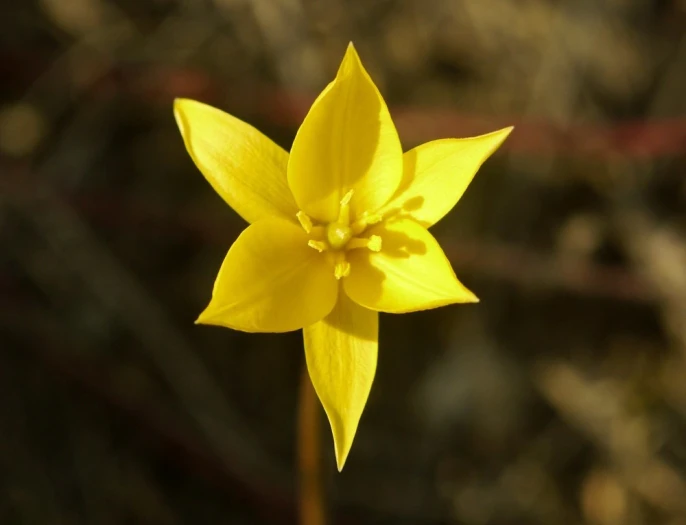Wild Tulip
(Tulipa sylvestris)
Wild Tulip (Tulipa sylvestris)
/
/

Roman
CC BY 4.0
Image By:
Roman
Recorded By:
Copyright:
CC BY 4.0
Copyright Notice:
Photo by: Roman | License Type: CC BY 4.0 | License URL: http://creativecommons.org/licenses/by/4.0/ | Rights Holder: Roman | Publisher: iNaturalist | Date Created: 2019-03-30T15:28Z |














































Estimated Native Range
Climate Requirements for Rochester Hills, Michigan
| This Plant | Your Site | Plant Suitability for Your Location | ||
|---|---|---|---|---|
| • Precipitation | 4" - 77" | 31" | Your precipitation may be too high for this plant. | Too high |
| • High Temp. | 50°F - 103°F | 83°F | Your summer temperatures are normal for this plant. | Excellent |
| • Low Temp. | -15°F - 49°F | 16°F | Your winter temperatures are normal for this plant | Excellent |
This plant may not grow well at your location - your precipitation is too high.
Summary
Tulipa sylvestris subsp. australis, commonly known as Wild Tulip, is a deciduous perennial herb that is native to a variety of habitats including open grasslands, meadows, and light woodlands in Southern Europe, North Africa, Western Asia, and Central Asia. It typically grows to a height of 0.8-1 feet (24-30 cm) and a width of 0.5 feet (15 cm). The Wild Tulip is characterized by its lance-shaped leaves and cup-shaped, scented yellow flowers that are often tinged with red on the exterior. The blooms make their appearance between April and May and are quite showy, attracting pollinators and adding a splash of color to the landscape.
The Wild Tulip is valued for its fragrant, attractive flowers and its ability to naturalize in suitable conditions, often forming impressive colonies. It is used in rock gardens, borders, and naturalistic plantings. While it prefers full sun, it can tolerate light shade and requires well-drained soil. Overwatering or poorly drained soils can lead to bulb rot. The plant is relatively low-maintenance, but it can be susceptible to tulip fire (Botrytis tulipae) and bulb nematodes. It is not typically invasive but can spread in favorable conditions.CC BY-SA 4.0
The Wild Tulip is valued for its fragrant, attractive flowers and its ability to naturalize in suitable conditions, often forming impressive colonies. It is used in rock gardens, borders, and naturalistic plantings. While it prefers full sun, it can tolerate light shade and requires well-drained soil. Overwatering or poorly drained soils can lead to bulb rot. The plant is relatively low-maintenance, but it can be susceptible to tulip fire (Botrytis tulipae) and bulb nematodes. It is not typically invasive but can spread in favorable conditions.CC BY-SA 4.0
Plant Description
- Plant Type: Herb
- Height: 0.8-1.2 feet
- Width: 0.333-0.5 feet
- Growth Rate: Moderate
- Flower Color: Yellow
- Flowering Season: Spring
- Leaf Retention: Deciduous
Growth Requirements
- Sun: Full Sun
- Water: Medium
- Drainage: Slow, Medium, Fast
Common Uses
Bank Stabilization, Fragrant, Low Maintenance, Potted Plant, Rock Garden, Showy Flowers
Natural Habitat
Native to open grasslands, meadows, and light woodlands
Other Names
Common Names: Woodland Tulip
Scientific Names: Tulipa sylvestris, Tulipa australis, Tulipa sylvestris subsp. australis, Tulipa quercetorum, Tulipa biebersteiniana, Tulipa ophiophylla, Tulipa hypanica, Tulipa fragrans, Tulipa pumila
GBIF Accepted Name: Tulipa sylvestris subsp. australis (Link) Pamp.